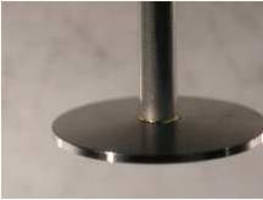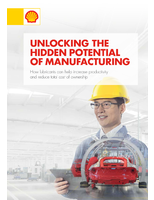Micro-Brazing

Vacuum brazing has been used to join parts as long as a car or as small as a dime. Whether large or small, certain specifications must be met to have successfully brazed assemblies, proper joint tolerance, the right braze alloy, braze alloy application, furnace cycle and proper fixturing are all necessary. Recently, a new application for micro-brazing small medical parts presented itself to Solar that challenged the application of these criteria.
The two parts to be brazed were a small tube, .060 OD x ½ long, and a thin disc, 3/8" disc diameter x .027" thick. The parts were an exotic alloy, consisting of platinum and iridium. Jamie Jones, General Manager of Heat Treating in Souderton, took on the task because of his 10 years working on these specialized brazing projects while at Solar's Township Line plant. It was a challenge, but the customer was eager to work with Solar.
Success was not easily achieved. Brazing temperature, time, furnace atmosphere, the right braze alloy were all variables, and the right combination needed to be determined to achieve the desired result. Bright, clean parts, leak proof joint area and with production fixturing were the goals.
The trial runs were numerous. Problems with discoloration, getting the right form of alloy, and inconsistent results were encountered. After many discussions with the customer and trying alternative brazing cycles, the right combination of cycle and processing specifications was achieved.
Gold is the right braze alloy for platinum iridium, but the best form was a challenge. After using fine wire preforms, a gold paste was chosen for its wetting (spreading) capability. A discoloration problem was determined to be from part outgassing. The reason was that melting the gold alloy required temperatures higher than 1945°F. After trying a hydrogen atmosphere to prevent discoloration, brightness was an issue. Finally, the assemblies were processed in high vacuum, 10-5 torr with temperature closer to the 1945°F liquidous. The assemblies came out very bright. Production fixturing was developed with two machined graphite plates to hold and process eight assemblies in each fixture. Actual braze runs would be determine the final production capability, but it was estimated that 30 - 40 fixtures could be run on each furnace cycle.
Success was achieved. Communication between Solar and the customer, knowing the processing alternatives, perseverance and patience were the attributes Jamie brought to the table. Each new brazing job, to a lesser or greater degree, requires these attributes by Solar's sales and engineering people. The mission statement makes this point, Solar is "willing to take on the challenge."
For more information, contact Solar's Marketing Manager, Bob Lacock, at 800.347.3236, extension 213, or rdl@solaratm.com



